The 10 Figures in Buddhist Art You Need to Know
Since ancient times, subjects from Buddhism have been widely and beautifully represented in art through paintings and sculptures. Various Bodhisattvas (those who aspire to become like Buddha or attain enlightenment), are frequently depicted in Buddhist art, amongst other important characters.

The portrayal of Buddhist figures in art is deeply nuanced and layered, with different postures and colours signifying specific meaning. Here are 10 figures depicted most commonly in Buddhist art.
1. Guan Yin
An important bodhisattva worshipped in East Asia, Guan Yin is known for her unbound wisdom, compassion and mercy, and depicted in several different forms. Personifying kindness, she is often displayed in a flowing white robe (where white symbolizes purity) and is adorned with necklaces. Her lotus seat signifies peace and harmony. In another representation, the deity has several arms and eyes, referred to as the 'thousand-arms, thousand-eyes' bodhisattva, where she can see the hardships inflicted upon humanity and extends her arms to relieve people from it.
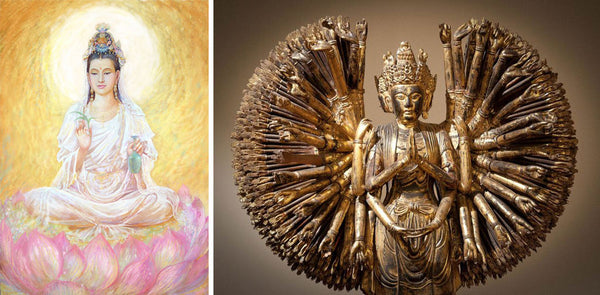 Left: Guan Yin in white robes seated on a lotus; Right: Wood sculpture of the 'thousand arms-thousand eyes' Guan Yin from the Song Dynasty
Left: Guan Yin in white robes seated on a lotus; Right: Wood sculpture of the 'thousand arms-thousand eyes' Guan Yin from the Song Dynasty
Guan Yin is also portrayed in the Royal Ease pose, with her right knee raised and the right arm sitting on it. One of the most iconic renditions of this form, is the 12th Century polychrome wooden figure at the Nelson-Atkins Museum of Art in Kansas.
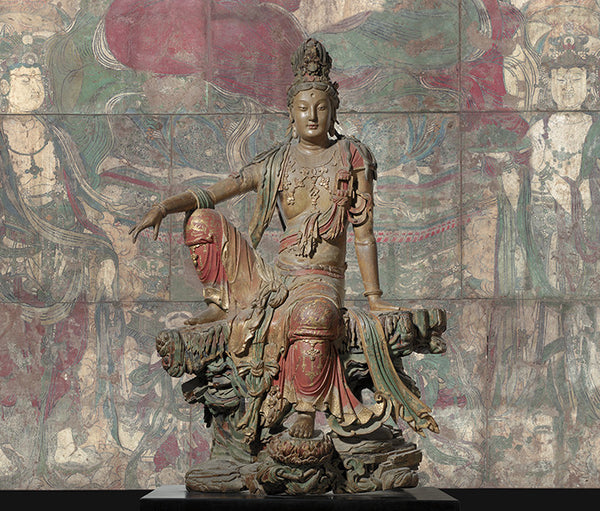 Guan Yin polychrome figure at Nelson-Atkins Museum of Art
Guan Yin polychrome figure at Nelson-Atkins Museum of Art
2. Padmasambhava
Heralded as the Second Buddha, Padmasambhava, also known as Guru Rinpoche, is considered responsible for introducing Buddhism to Tibet. Padmasambhava is believed to have eight different manifestations and hence, illustrated in different ways. Some of the manifestations include him in majestic garb with a skull-bowl and beating the hand-drum, him in a dark blue avatar in union with his consort, or as an ordained Buddhist monk.

A couple of his notable portrayals includes the wall painting at Paro bridge in Bhutan and the towering statue looking over the Rewalsar Lake in Himachal Pradesh.
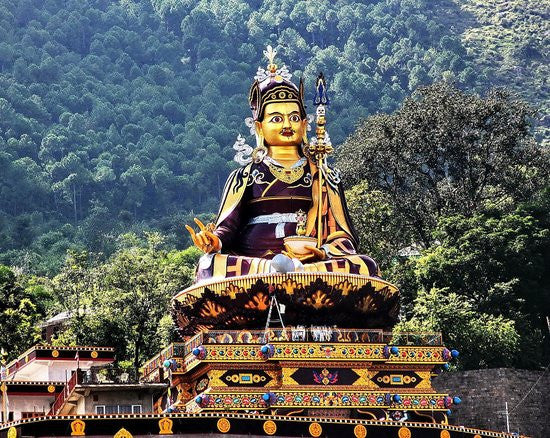 A statue of Padmasambhava near Rewalsar Lake in Himachal Pradesh, India
A statue of Padmasambhava near Rewalsar Lake in Himachal Pradesh, India
3. Tara
Considered the consort of Avalokiteshvara (the male version of Guan Yin), Tara is a venerated Buddhist deity, known as the female manifestation of active compassion. Three of her most popular avatars are in green, white and red standing for enlightened activity, longevity and compassion, and attracting all good things, respectively.
 Green Tara bronze sculpture
Green Tara bronze sculpture
Click to purchase on Artisera
Additionally, Tara’s blue form is called upon to destruct enemies, whereas the black form is associated with power. In many instances, she is shown with her right leg stretching downwards, signifying that she is always prepared to step down and help those who call out to her. A rare depiction of the White Tara and Green Tara side by side is in a 15th Century Tibetan cloth painting, at the Metropolitan Museum of Art, New York.
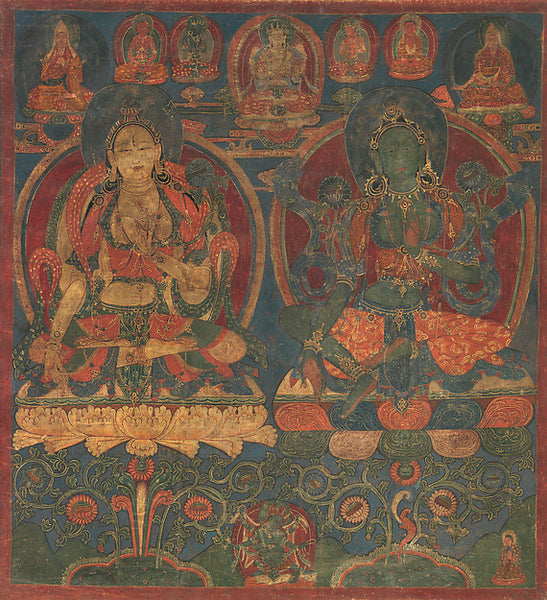 Tibetan painting depicting White Tara and Green Tara in an unique arrangement at the Metropolitan Museum of Art
Tibetan painting depicting White Tara and Green Tara in an unique arrangement at the Metropolitan Museum of Art
4. Manjushri
Believed to be amongst the oldest and most important bodhisattvas in Mahāyāna literature, Manjushri exemplifies wisdom. He is often portrayed with ornaments and a flaming sword in his right hand, representing the weapon of wisdom that cuts through ignorance. The Prajnaparamita Sutra (scripture) resting on the lotus on his left hand, personifies pure wisdom of Buddha's teachings and a promise of a bright future to followers. The revered figure usually sits on a lion or a blue lotus. Some remarkable depictions of the Manjushri bodhisattva include the palm leaf manuscript painting in Nalanda, Bihar and paintings from the Yulin Caves of Gansu, China.
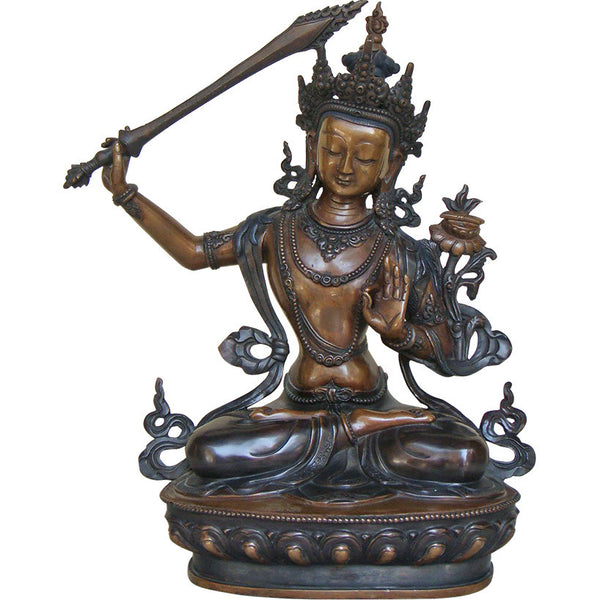 Nepalese lost wax bronze sculpture of Manjushri
Nepalese lost wax bronze sculpture of Manjushri
Click to purchase on Artisera
The revered lord Kuber is known as Vaishravana in Buddhism, referred to as the King of the North and the Lord of Yakshas. The divinity frequently exhibits a yellow face, carrying an umbrella that signifies his power. He is also sometimes seen accompanied by a mongoose (enemy of snakes, signifying greed), that spits out jewels, which is a symbol of generosity. Vaishravana often takes a ferocious form riding a lion or with a spear in one hand and a 'treasure pagoda' in his right, dispensing rewards to the worthy. While Vaishravana has been depicted frequently in art, interestingly enough, he also makes a presence in video games.
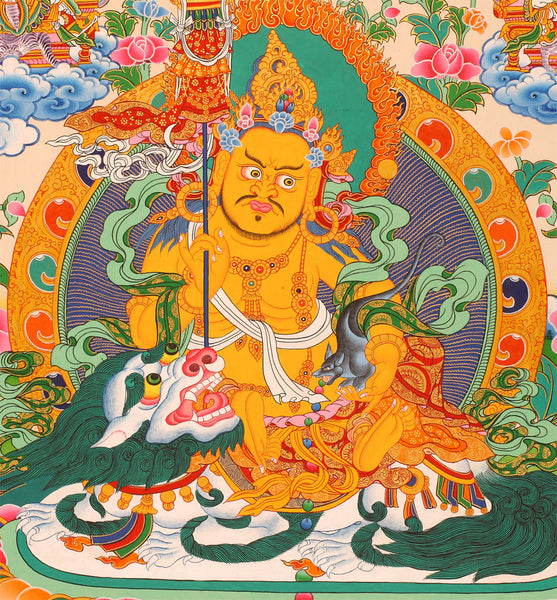
6. Vajrapani
Considered to be among the earliest appearing bodhisattvas in Mahayana Buddhism, Vajrapani is celebrated as the protector of Lord Buddha and the one who manifests his power. He often bears a wrathful countenance. His right hand holds a thunderbolt that slices through the darkness of delusion.
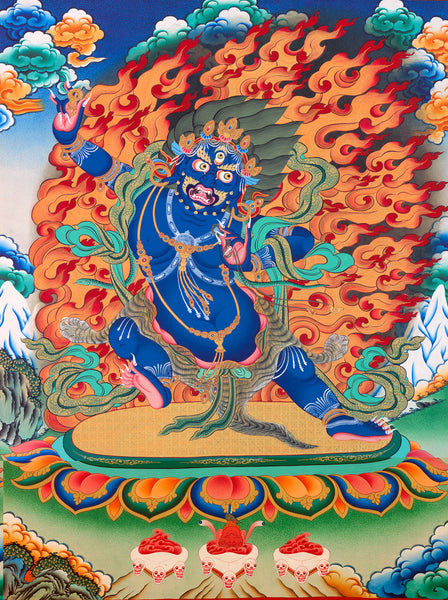
At times, he adorns a skull crown or a five-pointed bodhisattva crown expressing the potency of the five Dhyani Buddhas (fully awakened state of the Buddha). A renowned and rare depiction of Vajrapani is seen in an 7th-8th century stone sculpture from Bihar, at the Met Museum.
 Rare depiction of Vajrapani in this 7th century sculpture from Bihar, at The Met Museum
Rare depiction of Vajrapani in this 7th century sculpture from Bihar, at The Met Museum
7. Maitreya
As per Buddhism, Maitreya will emerge in this world in the future, to attain absolute enlightenment and preach pure dharma. Maitreya is frequently shown sitting on a throne with his feet on the ground, or with loosely crossed ankles as if waiting for his turn to come. As a bodhisattva, he normally takes a standing stance and is adorned with jewels. Often, there is a small Stupa in his headdress.
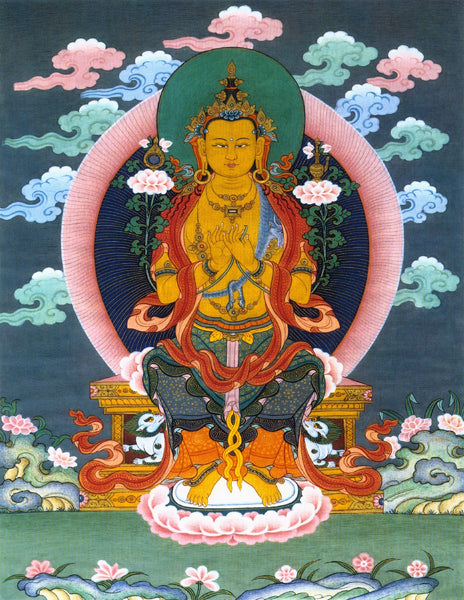
8. Amitayus / Amida / Amitabha
Symbolising a long life, Amida is also known as Amitayus or Amitabha, and celebrated as "The Buddha of Immeasurable Life and Light". The Lord is prayed to for longevity. He is shown decorated with ornaments and a crown, and with an ambrosia vase that lets out the jewels of eternal life.
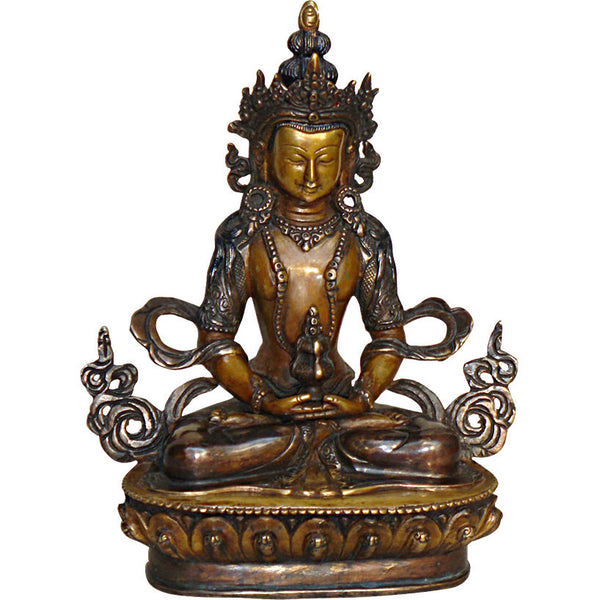 Bronze sculpture of Amitayus Buddha with antique finish
Bronze sculpture of Amitayus Buddha with antique finish
Click to purchase on Artisera
9. Vajrasattva
Vajrasattva, sometimes confused with Vajrapani, is a bodhisattva that represents the principle of purification in Tibetan Buddhism. He is often pictured with a vajra (thunderbolt), which represents the potency and indestructibility of a mind that is enlightened. Some of the lord's depictions include him with 3 faces and 6 hands in a bodhisattva posture, with a consort, or with hands crossed at the heart.
 Vajrasattva with consort
Vajrasattva with consort
The Rubin Museum of Art in New York holds several fascinating portrayals of the divinity such as the 14th Century statue of Vajrasattva and the paintings made on cotton canvas.
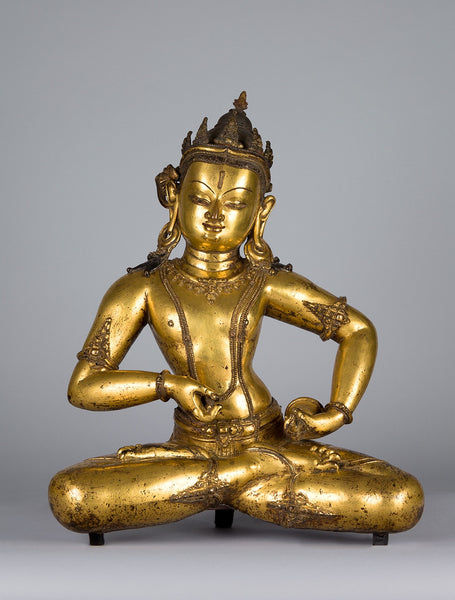 14th century statue of Vajrasattva at the Rubin Museum of Art
14th century statue of Vajrasattva at the Rubin Museum of Art
10. Mahapratisara
Mahapratisara is a Bodhisattva of the Mahayana and Vajrayana sects, believed to grant wishes of those who worship her. The deity has four heads and eight arms and usually sits on a lotus throne. She is illustrated in white with yellow, white, red and green heads. In her hands, she holds palm-leaf scriptures, a dharma banner, noose, vajra, trident, a sword, and an axe. Among her renowned depictions is the Daizuigu statue in Guimet Museum.
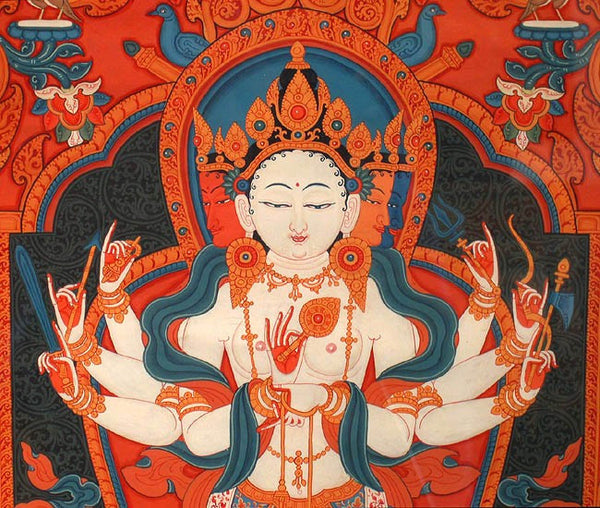
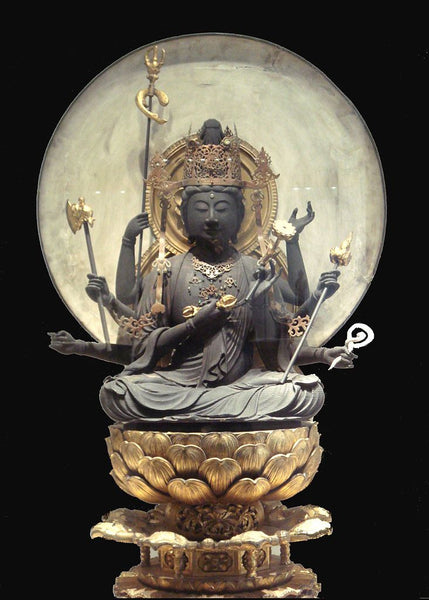 The Daizuigu statue of Mahapratisara in Guimet Museum, Paris
The Daizuigu statue of Mahapratisara in Guimet Museum, Paris
Buddhism and its various characters have been depicted beautifully in art for thousands of years, and make for beautiful decor accents in the home! Intricately carved sculptures and detailed Buddhist paintings don't just look exquisite, but also create a calm and tranquil atmosphere wherever they're placed.























































































